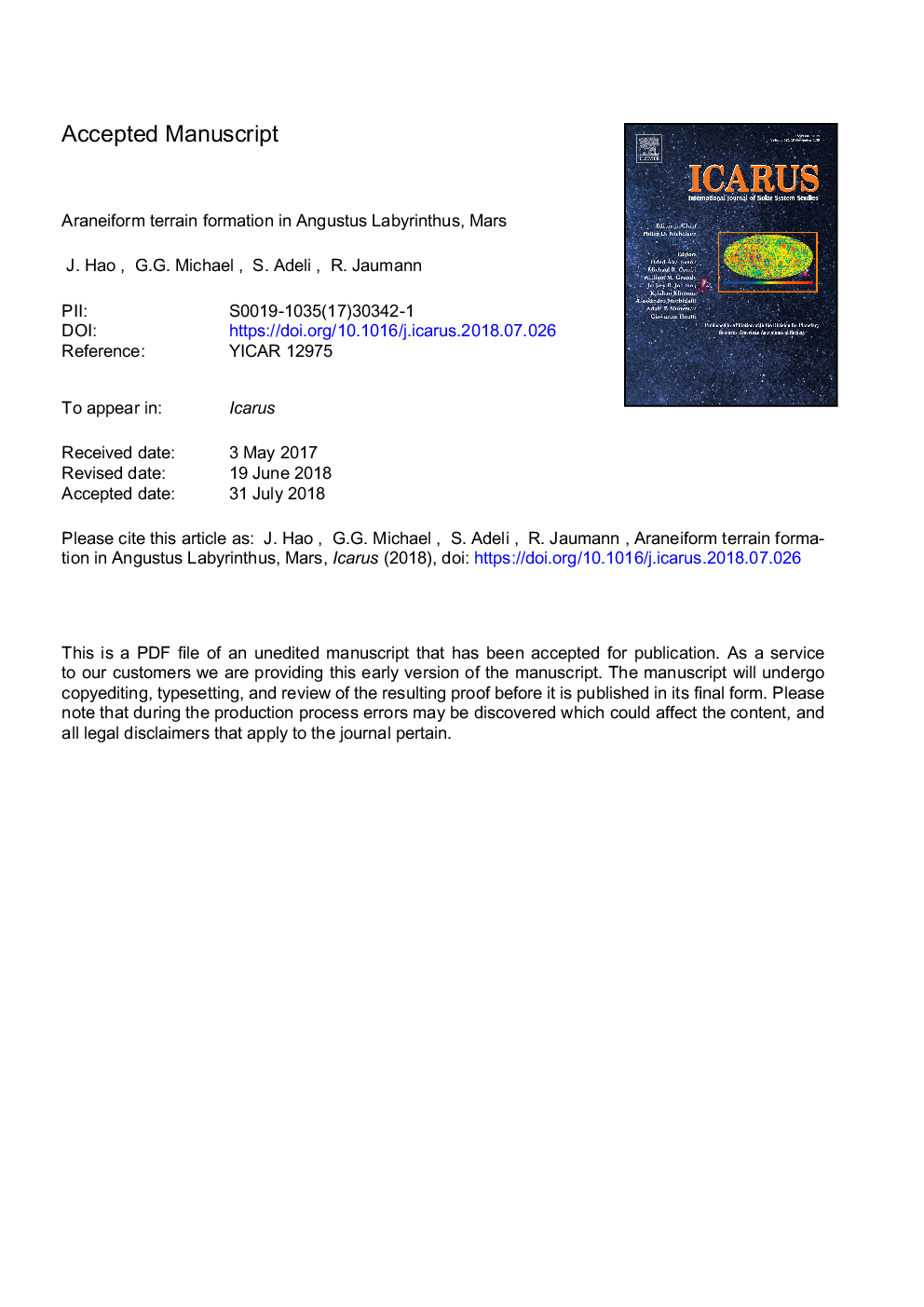| کد مقاله | کد نشریه | سال انتشار | مقاله انگلیسی | نسخه تمام متن |
|---|---|---|---|---|
| 9953759 | 1523475 | 2019 | 38 صفحه PDF | دانلود رایگان |
عنوان انگلیسی مقاله ISI
Araneiform terrain formation in Angustus Labyrinthus, Mars
دانلود مقاله + سفارش ترجمه
دانلود مقاله ISI انگلیسی
رایگان برای ایرانیان
کلمات کلیدی
موضوعات مرتبط
مهندسی و علوم پایه
علوم زمین و سیارات
علوم فضا و نجوم
پیش نمایش صفحه اول مقاله

چکیده انگلیسی
The south polar area of Mars exhibits an abundance of distinctive and exotic landforms, most of which occur within the region covered by the seasonal CO2 cap. Araneiform terrain (also referred to as terrain covered by “spiders”) is one of these unusual geomorphic features, resulting from CO2 sublimation driven seasonal erosion. The High Resolution Imaging Science Experiment (HiRISE) on board NASA's Mars Reconnaissance Orbiter (MRO) spacecraft has repeatedly imaged Angustus Labyrinthus, informally known as the Inca City region (81°S, 296°E), over a period of four Martian years, showing a variety of classic polar features associated with sublimation and deposition including spiders. We mapped the spiders´ spatial distribution in the Inca City region and classified them in view of their morphological and topographic characteristics into four types, fat, thin, half, and elongated spiders. The latter two are reported for the first time in this work. We find that the formation mechanisms of half and elongated spiders were substantially influenced by ridge boundaries topography and pre-existing linear depressions, respectively. Based on our observations, we extend the conceptual model of spider erosion, explaining new elements of the spider formation process. We interpret the causes of deviating araneiform species from thin spiders (i.e., half, elongated and fat spiders) in the context of the extended model. We consider the migration of pressurized CO2 through the porous substrate towards breaches in the ice cover, and the influence of the substrate's cohesive strength on the development of spider legs. Analysis of the spatial distribution of a fat spider population revealed that the initiation locations of spiders are not random but more evenly spaced, indicating the existence of an inhibited zone around a newly formed spider, consistent with our interpretations of the formation mechanism. Our case study in the Inca City region provides new understanding in the formation process of basal sublimation-driven features and thus offers new insight into polar surface processes.
ناشر
Database: Elsevier - ScienceDirect (ساینس دایرکت)
Journal: Icarus - Volume 317, 1 January 2019, Pages 479-490
Journal: Icarus - Volume 317, 1 January 2019, Pages 479-490
نویسندگان
J. Hao, G.G. Michael, S. Adeli, R. Jaumann,